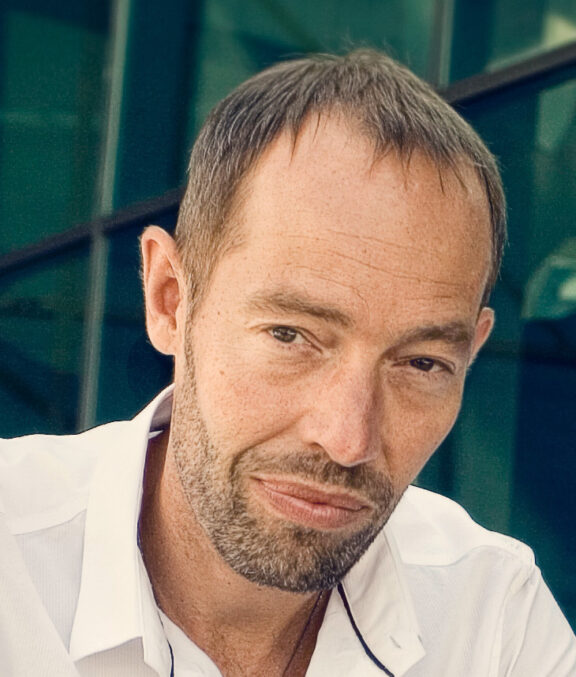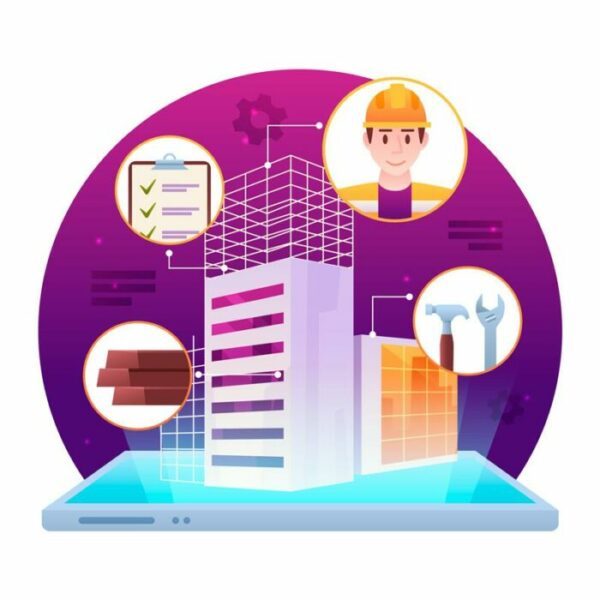How can BIM improve collaboration, support sustainability goals, and become a reliable standard across the construction industry? We asked Felix Grau, Managing Director of NOVA Building IT, to share his insights. In this expert interview, he explains how digital tools like BIM can help streamline planning processes, reduce emissions, and enhance decision-making – not only for large enterprises but also for smaller companies ready to embrace digital transformation.
How can BIM improve collaboration between different stakeholders in the construction process?
When used correctly, BIM improves processes through digitalisation. A simple example: planning a building is an iterative process. There’s not just one plan or model, but many versions.
For each new version, costs need to be estimated or calculated – which is exactly NOVA AVA’s area of expertise. A new version means changed quantities and volumes, so new calculations must be made and evaluated for cost. The digital BIM process can already save up to 80% of time and effort here. This brings real relief in the collaboration between planners on one side and cost estimators/specifiers on the other.
The same principle applies to cooperation between architects, structural engineers, MEP planners, and others.
How can architects and planners make more sustainable decisions by using BIM?
There are two types of sustainability, which often go hand in hand: economic and ecological sustainability.
Economic sustainability: BIM makes projects clearer, more plannable, and more manageable in terms of costs and time. In building planning and construction, BIM to AVA (i.e. model-based cost estimation, tendering, awarding, and billing) works very well for many players. The broader industry just needs more stakeholders to get on board the BIM train – and that’s only a matter of time.
Ecological sustainability: BIM means digitalisation. So the question is: can sustainability assessments of buildings be carried out digitally in the BIM process? The answer is clearly yes. Whether you evaluate a building in terms of cost or ecological indicators for each element and component doesn’t make a big difference. Different design variants can be quickly evaluated – provided that the assessment data is available in digital form.
What do you see as the biggest challenges and opportunities for BIM in the context of NetZero goals?
The biggest challenge is having reliable, meaningful, and well-structured digital data for building materials. Once such truly digital data exists, it can be used in BIM processes for evaluating buildings.
Currently, too much still has to be done manually. That means there are calculation and evaluation tools available, but too much input must be entered manually – at least from our point of view.
What are the most important steps to establishing BIM as a mandatory standard in the construction industry?
The five most important steps are personal experience. These steps are:
-
Try it – 2. Establish it – 3. Practice – 4. Practice – 5. Practice
A touch of pragmatism is also part of the recipe for success.
When we look at the players who are furthest along with BIM and digitalisation, it’s those who’ve gotten hands-on, gained experience, and continuously improved their methods. Of course, this requires technical and digital understanding – but that also grows with practice. Such players usually develop streamlined, easy-to-understand processes that can actually be used in practice.
As software developers, we’re happy to support that – especially working directly with users who approach BIM with enthusiasm, energy, and pragmatism.
So for BIM to become a binding standard, one essential condition is: keep it simple.
What benefits does BIM standardisation bring to the construction industry and project execution?
With standards, BIM is easier to implement – that much is clear.
How can smaller companies be meaningfully included in standardised BIM processes?
Company size doesn’t determine BIM success. Small or large – that’s not the decisive factor.
What matters are:
- Willingness to take action
- A certain level of technical understanding
- A solution-oriented mindset
- And again, a bit of pragmatism
Which future technologies could further improve collaboration in the BIM environment?
Collaboration is not primarily a technological issue. Technologies, tools, software – these are all aids.
Collaboration depends on willingness. And that takes at least two parties who are willing to work together.

Felix Grau is the founder and shareholder of NOVA Building IT GmbH and has been involved in IT solutions for tendering (AVA) and construction cost management for over 20 years. As part of the ongoing digitalization of the construction industry, Mr. Grau actively contributes to relevant expert committees such as GAEB (AVA) and buildingSMART (BIM), where he supports the definition of data models and the standardization of processes.

